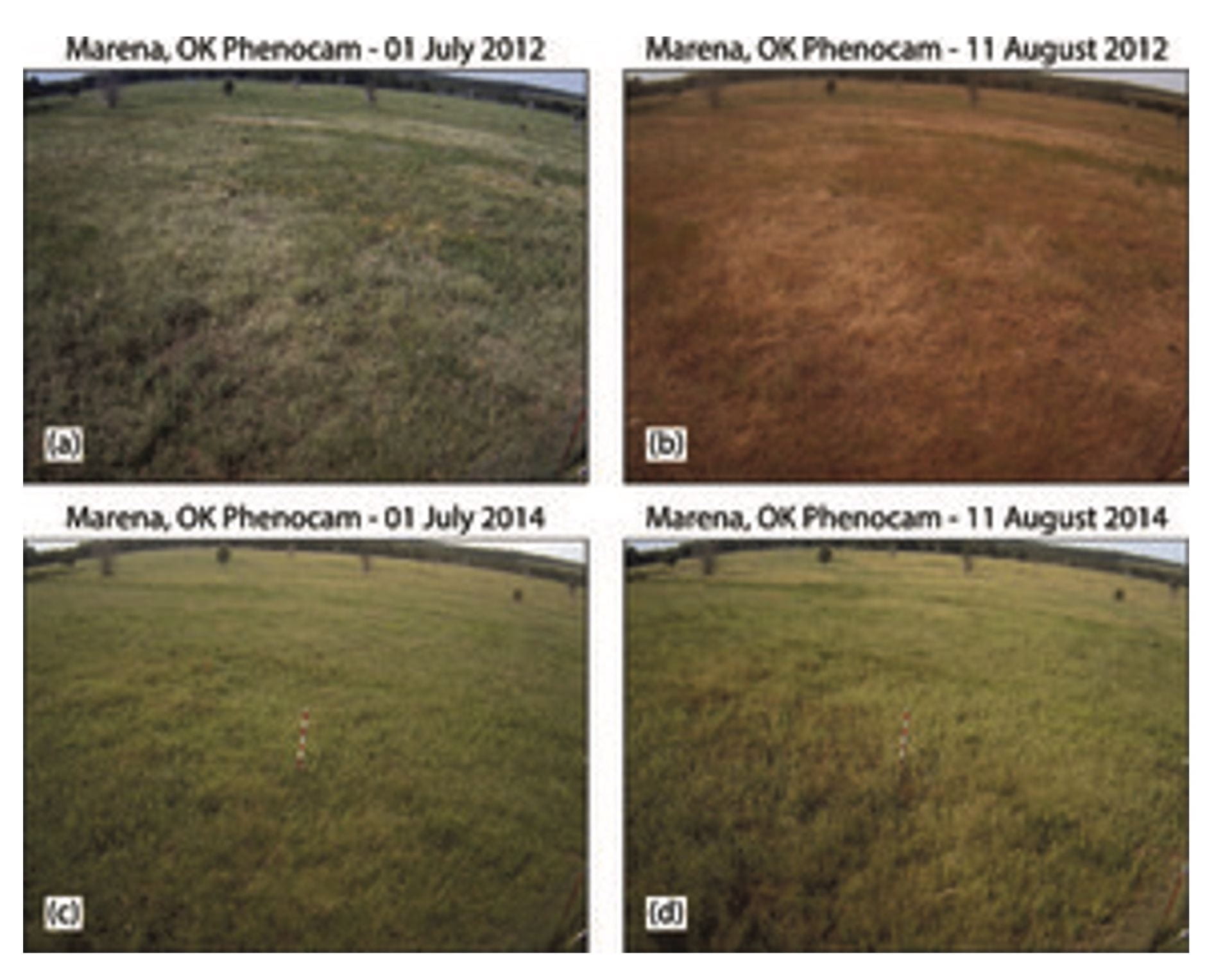By: Emily Black
At the height of the 2012 corn growing season, two thirds of the United States was hit by a sudden drought. The photographs below compare 2012 to a normal year:

Phenocam images taken at MOISST, which is adjacent to the Marena mesonet station, on (a) 1 Jul 2012, (b) 11 Aug 2012, (c) 1 Jul 2014, and (d) 11 Aug 2014. All images were taken at 10:30 local time. Otkin et al. 2018 https://journals.ametsoc.org/view/journals/bams/99/5/bams-d-17-0149.1.xml
Earlier this year, a similarly sudden drought dried out grasslands in Hawaii, contributing to the wildfires that devastated Maui.
There is a mounting body of evidence indicating that such ‘flash droughts’ are becoming more frequent and intense due to climate change, as discussed in this study. Consequently, understanding the factors driving flash droughts in current and future climates has become an increasingly urgent concern.
Recent research conducted at the University of Reading and the National Centre for Atmospheric Science has shed light on this issue. The findings show that flash droughts are consistently preceded by anomalously low relative humidity and precipitation. Interestingly, the study suggests that heat waves do not cause flash droughts, although flash droughts can cause heat waves.
Over the next century, flash droughts are projected to become more common globally. The plot below shows the percentage change in flash drought occurrence compared to 1960-2100, under a range of shared socioeconomic pathways:

The most severe changes are projected in Europe, the continental US, eastern Brazil and southern Africa:

To find out more, have a look at my paper in Advances in Atmospheric Science: http://www.iapjournals.ac.cn/aas/en/article/doi/10.1007/s00376-023-2366-5
